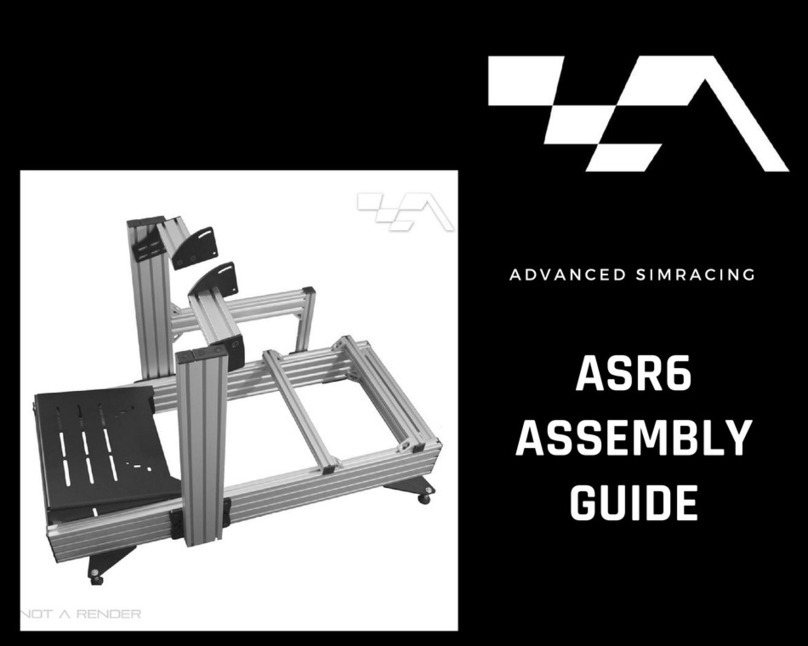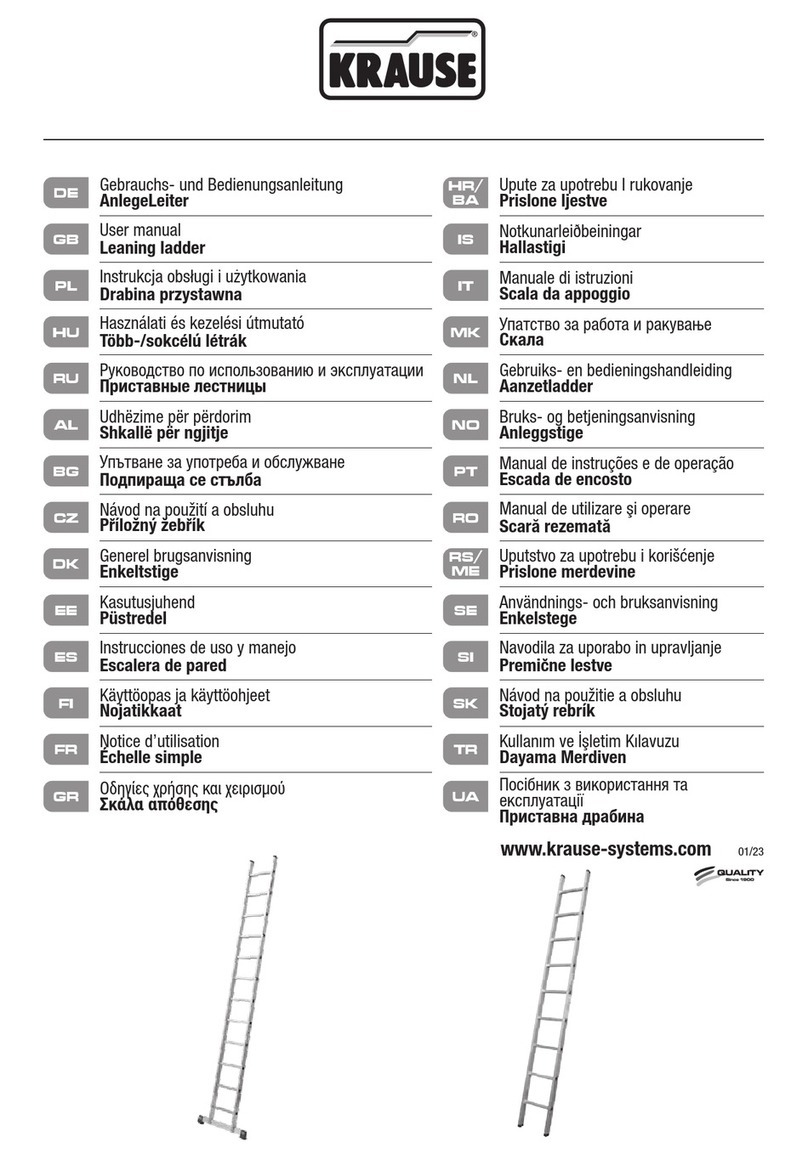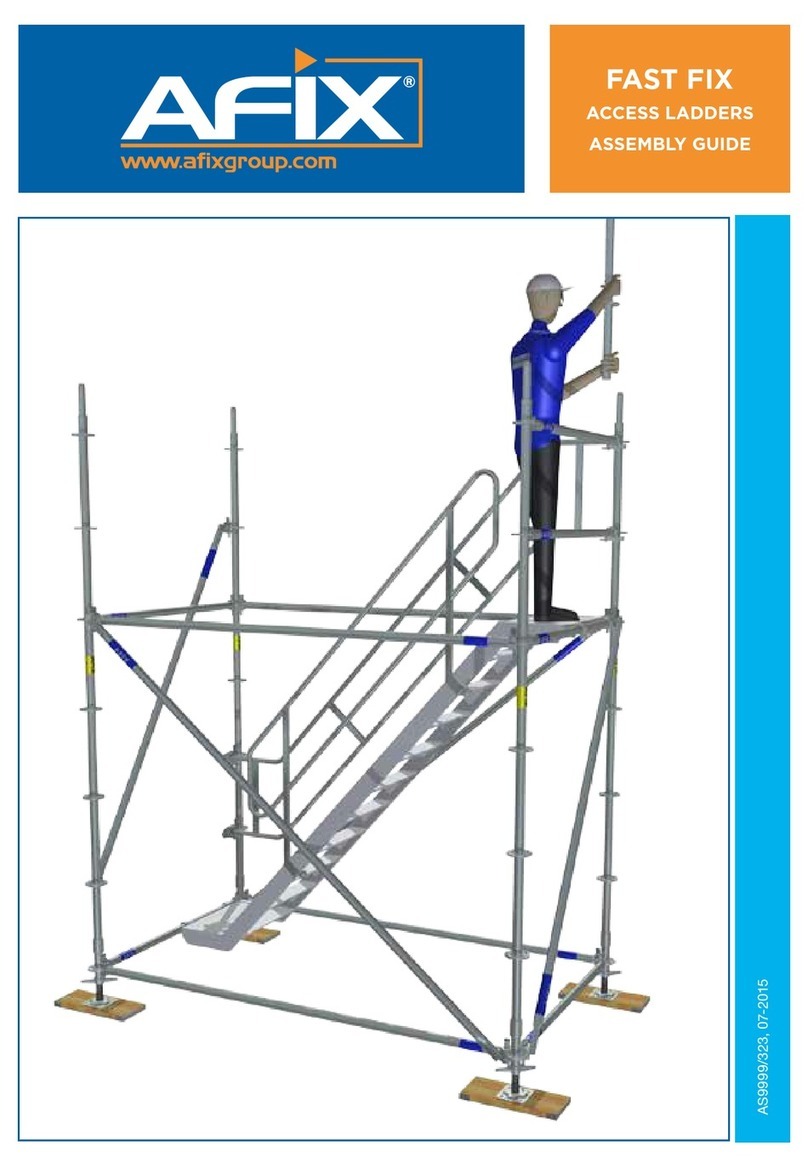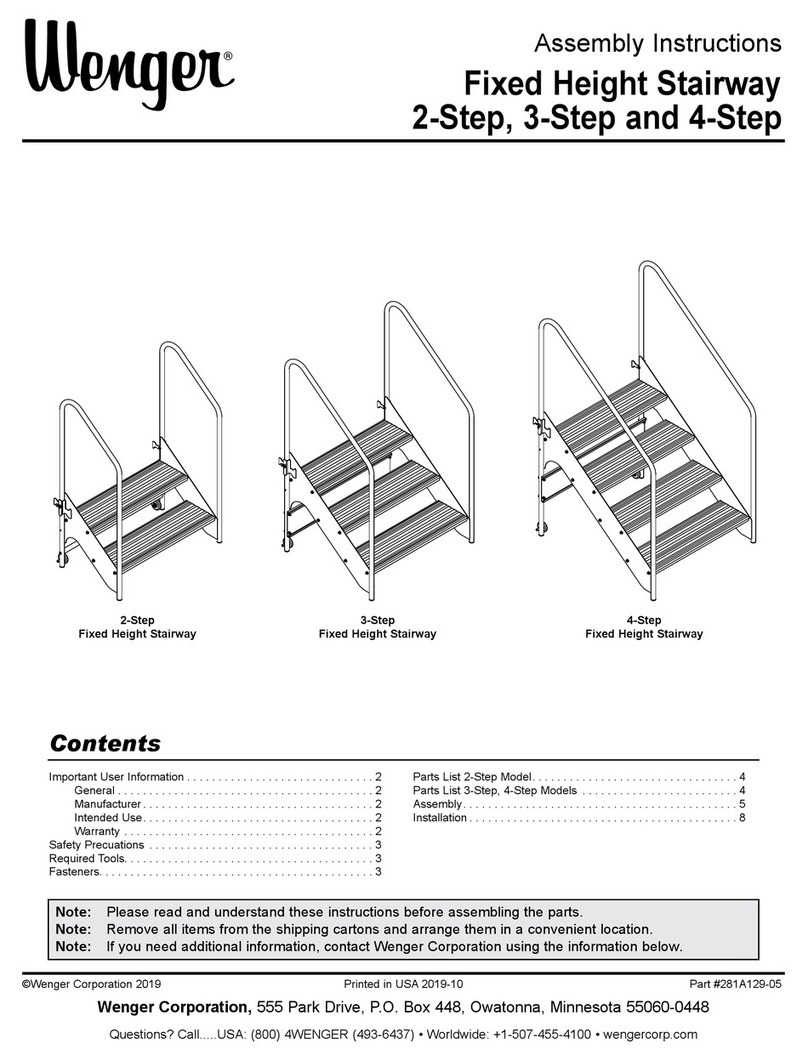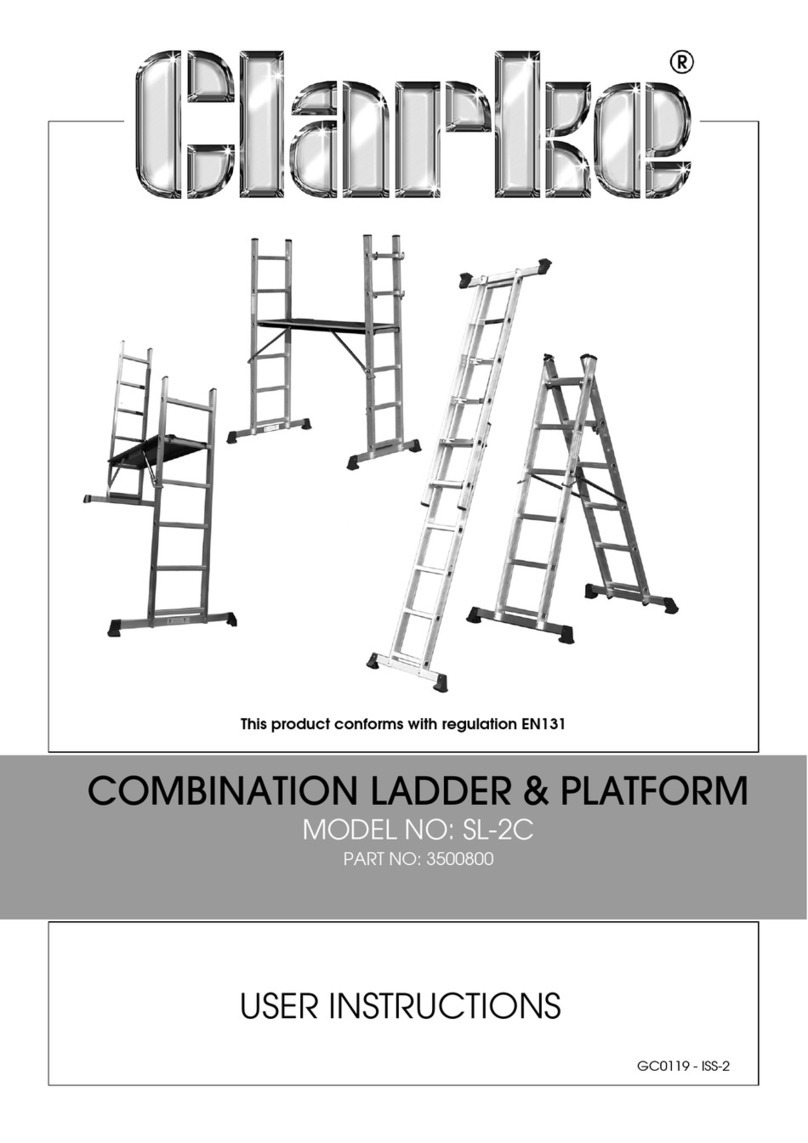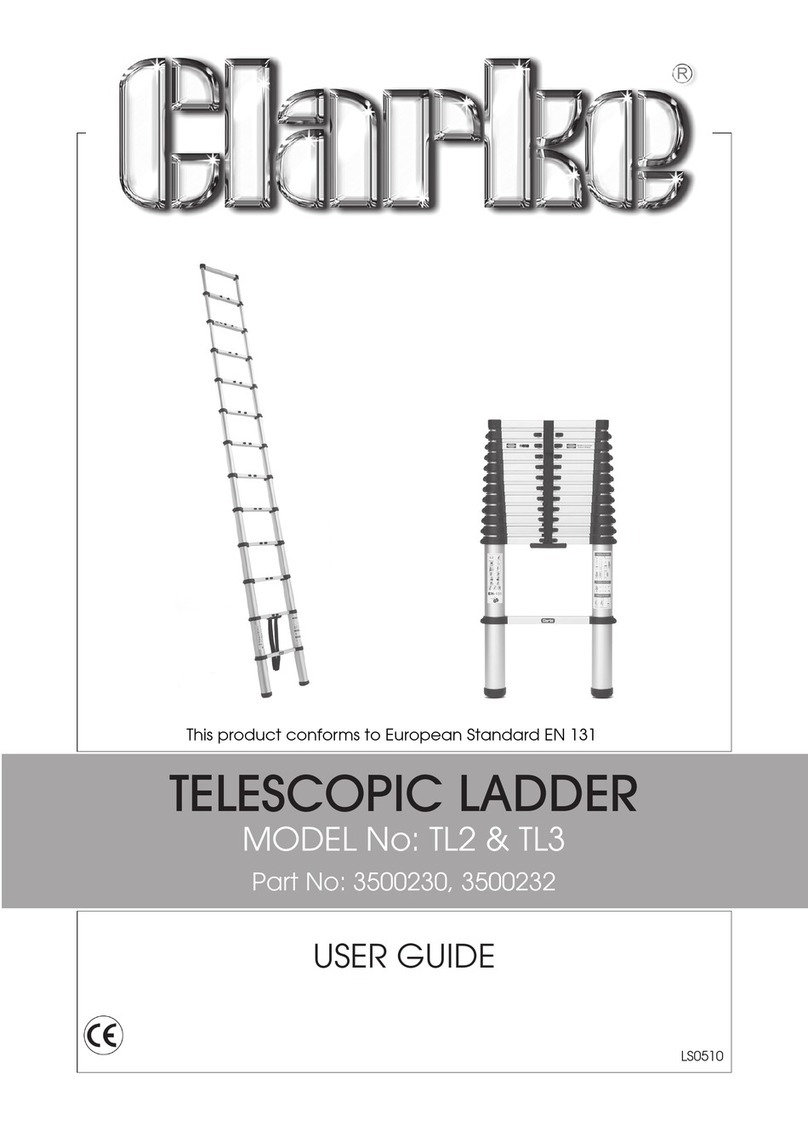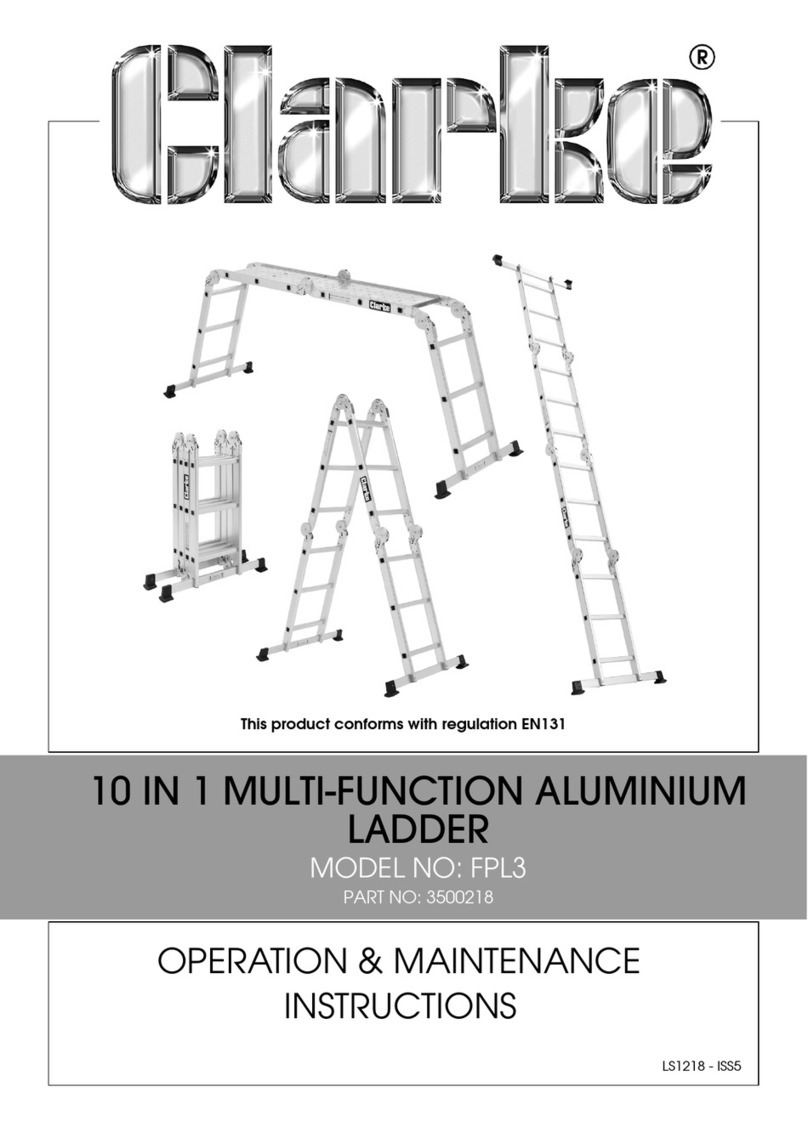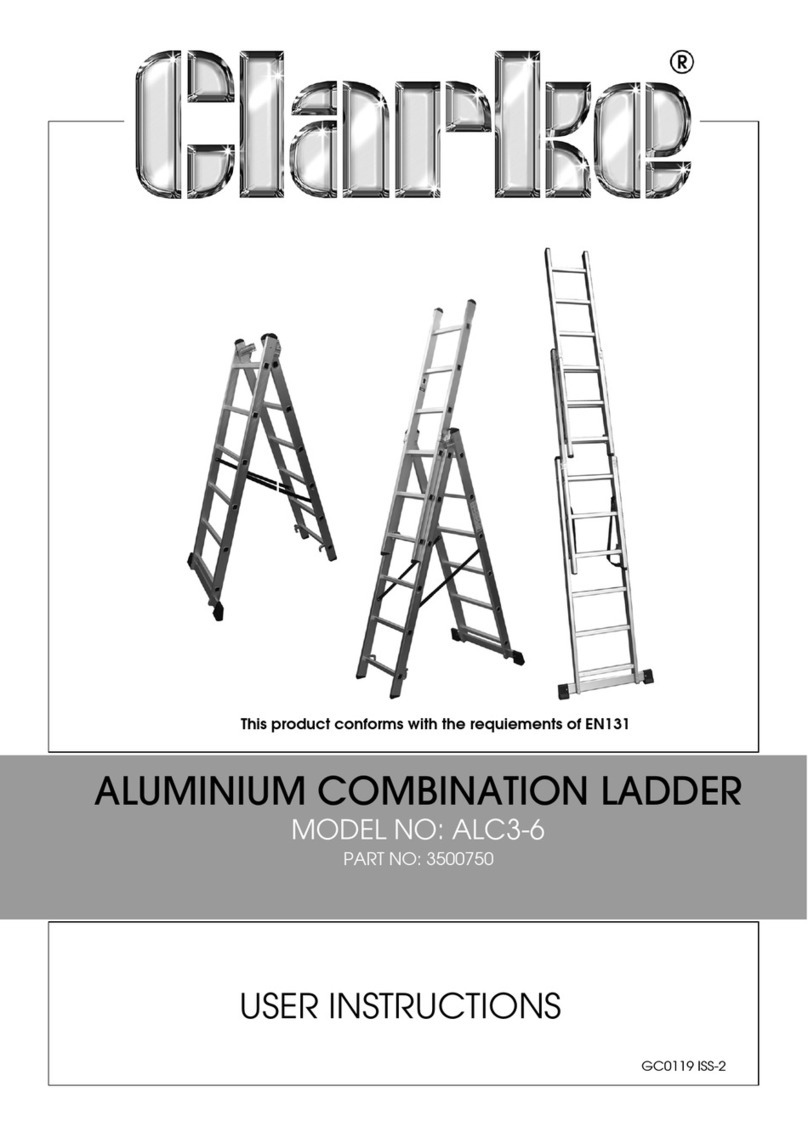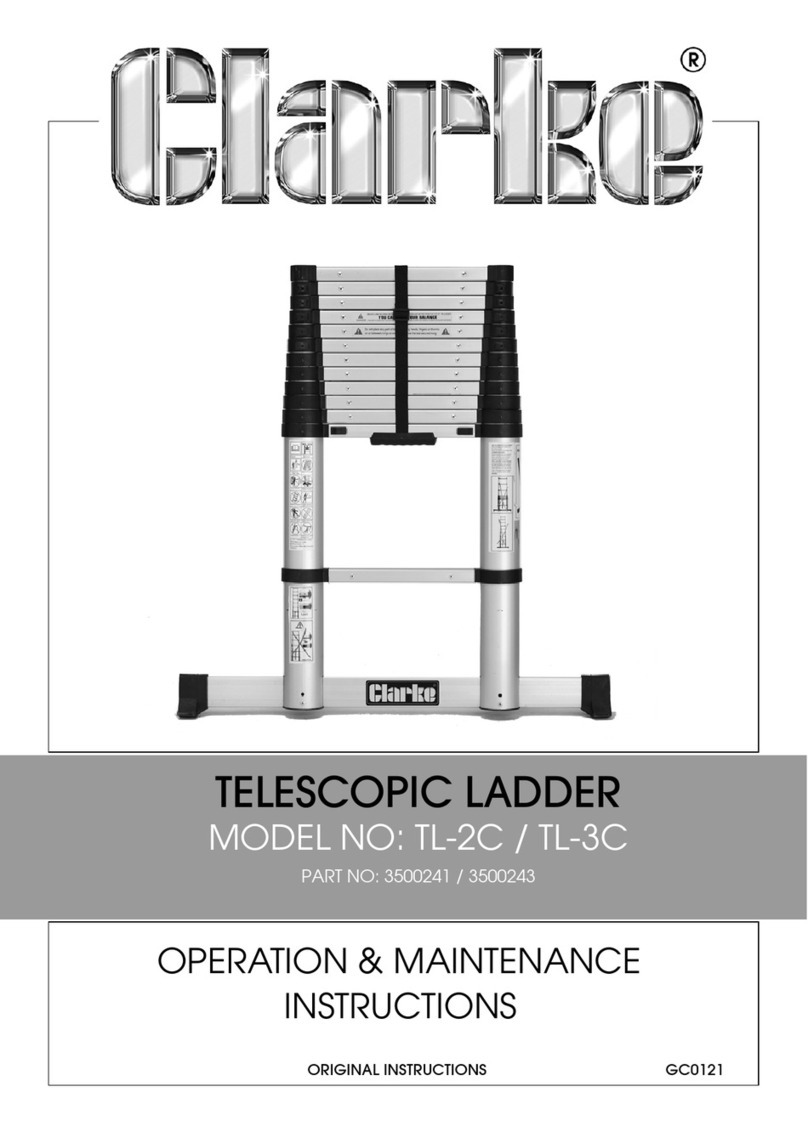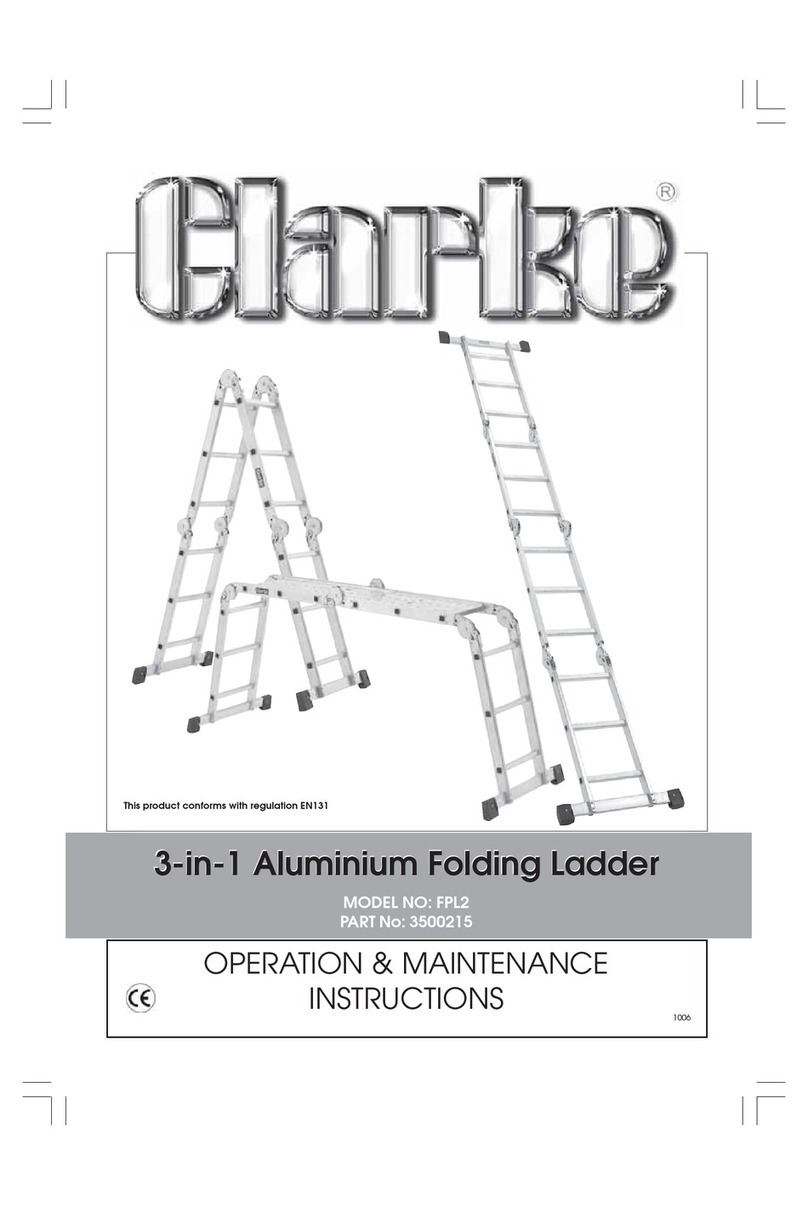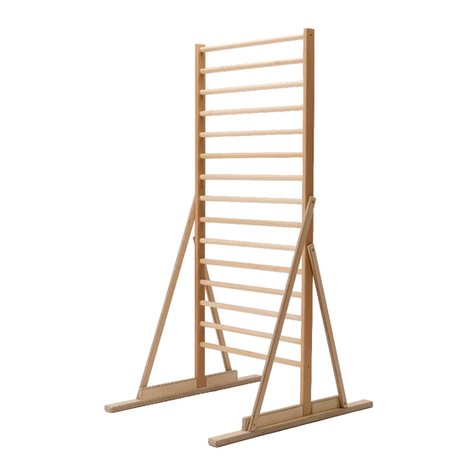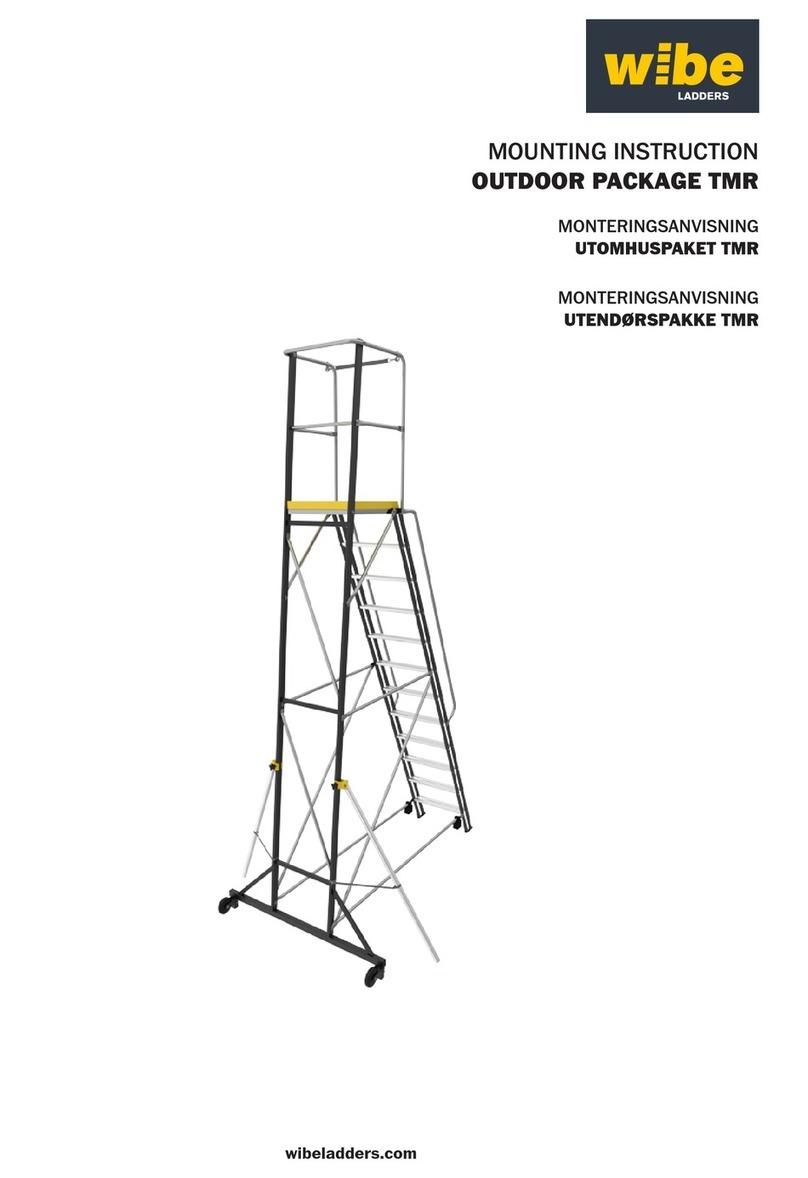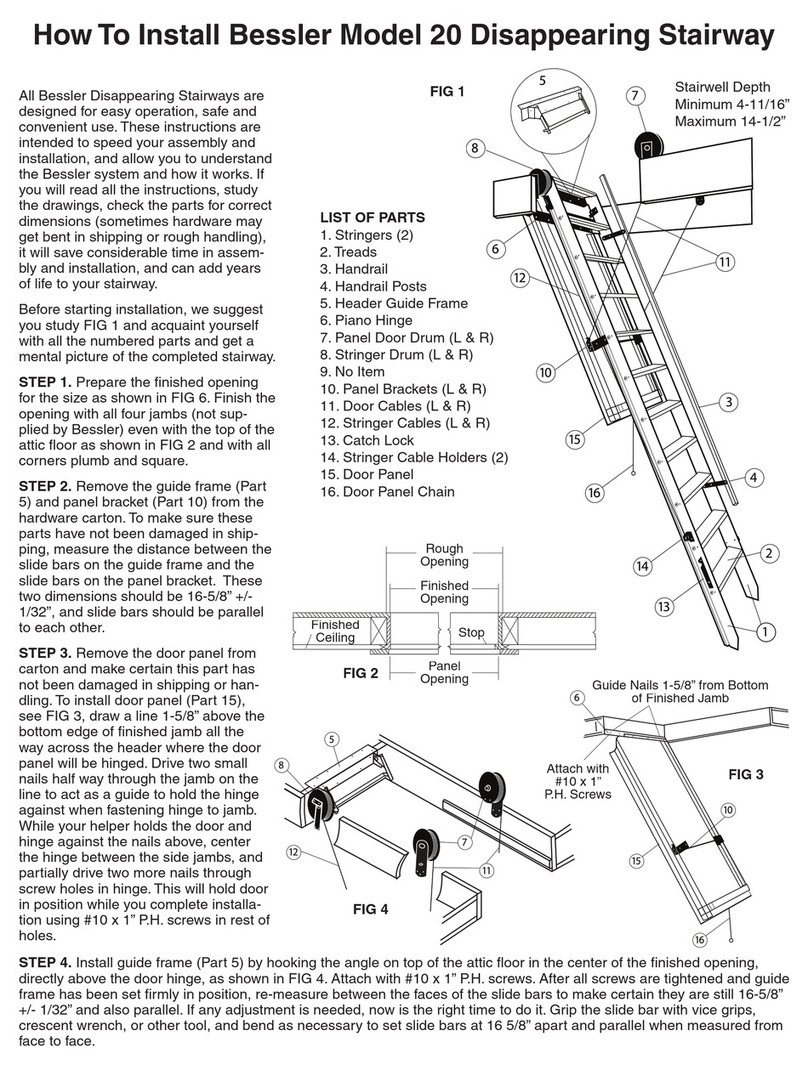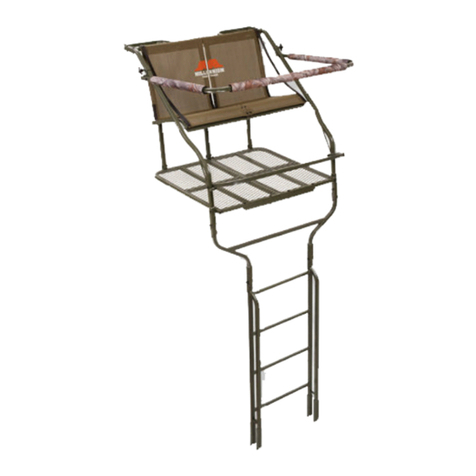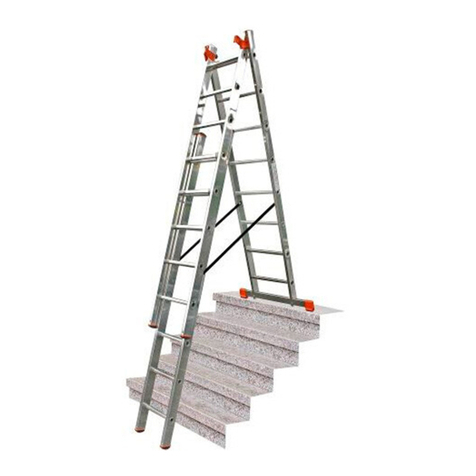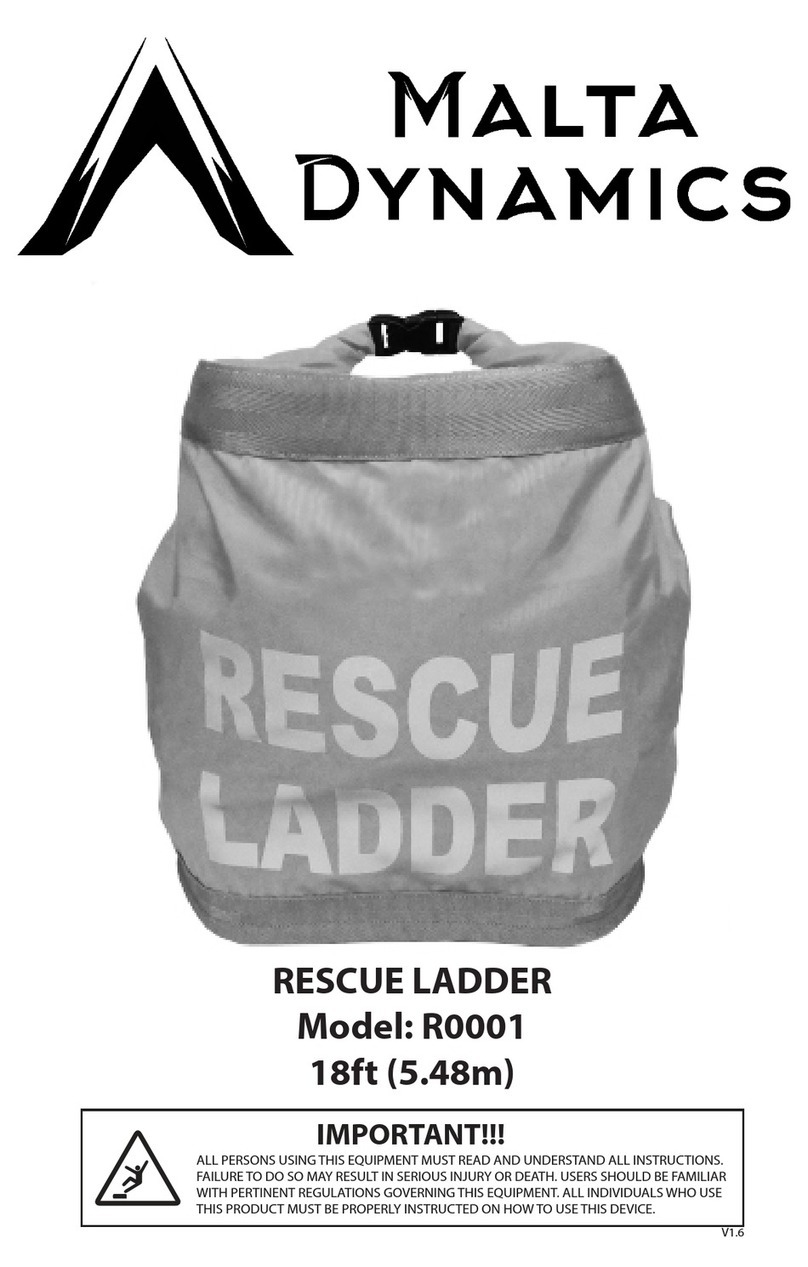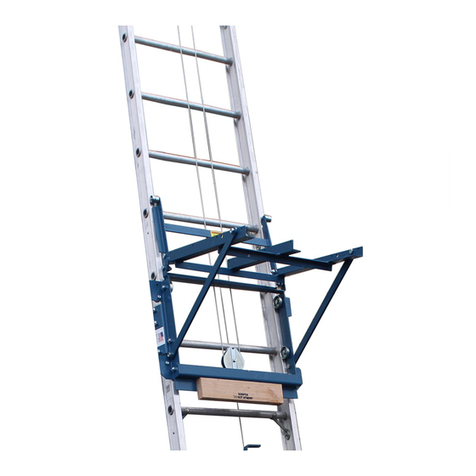
5
Parts & Service: 020 8988 7400 / E-mail: Parts@clarkeinternational.com or Service@clarkeinternational.com
SAFETY PRECAUTIONS
1. Ensure that you are fit enough to
use a ladder. Certain medical
conditions or medication, alcohol
or drug abuse could make ladder
use unsafe.
2. When transporting ladders on roof
bars or in a truck, ensure they are
suitably placed to prevent
damage;
3. Inspect the ladder after delivery
and before first use to confirm
condition and operation of all
parts;
4. Visually check the ladder is not
damaged and is safe to use at
the start of each working day
when the ladder is to be used;
5. Ensure the ladder is suitable for
the task;
6. Do not use a damaged ladder;
7. Remove any contamination from
the ladder, such as wet paint,
mud, oil or snow;
8. Before using a ladder at work a
risk assessment should be carried
out respecting the legislation in
the country of use.
9. ALWAYS maintain proper footing
and balance at all times, do not
over-reach. For best footing, wear
rubber soled footwear. Keep
floors clear of oil, scrap wood,
etc.
10. Make sure that the ladder is
standing on a firm and level
surface, also ensure the ladder is
safely secured, preferably at the
top and bottom.
11. ALWAYS keep work area clean.
Cluttered areas invite accidents.
12. Always keep children away. All
visitors should be kept a safe
distance from the work area.
13. ALWAYS wear any safety
equipment, such as hard hat,
work gloves and goggles etc if
the task being carried out requires
them.
14. ALWAYS exercise extra care when
raising ladders especially beneath
high voltage cables etc.
15. ALWAYS extend the ladder above
any landing place.
16. ALWAYS ensure as comfortable
position as possible before
commencing work.
17. ALWAYS keep a secure grip.
18. NEVER use the ladder whilst under
the influence of alcohol or drugs.
19. NEVER stand on the top rail of the
ladder.
20. When positioning the ladder take
into account risk of collision with
the ladder e.g. from pedestrians,
vehicles or doors. Secure doors
(not fire exists) and windows
where possible in the work area;
WARNING: IF NORMAL SAFETY PRECAUTIONS ARE NOT FOLLOWED,
PERSONAL INJURY TO THE OPERATOR OR DAMAGE TO PROPERTY MAY
RESULT.

